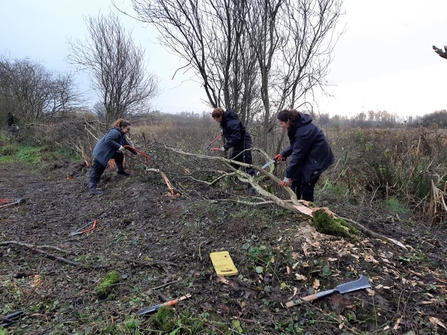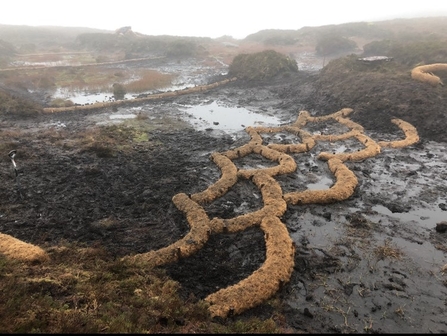Bog Meadows Nature Reserve
Our European Solidarity Corps volunteers were training at Bog Meadows yesterday in hedgelaying, a countryside craft that was once widespread in Ireland.
It involves partly cutting through the hedgerow stems near ground level so that they will bend without breaking and continue to grow. This causes new growth at the stump, thickening the base and rejuvenating the hedge.
This method of rejuvenating a hedge can extend its lifespan almost indefinitely and it provides a great habitat for many wild birds, small mammals, plants and insects. ~ Deborah McLaughlin, Community Engagement Officer



